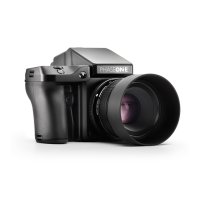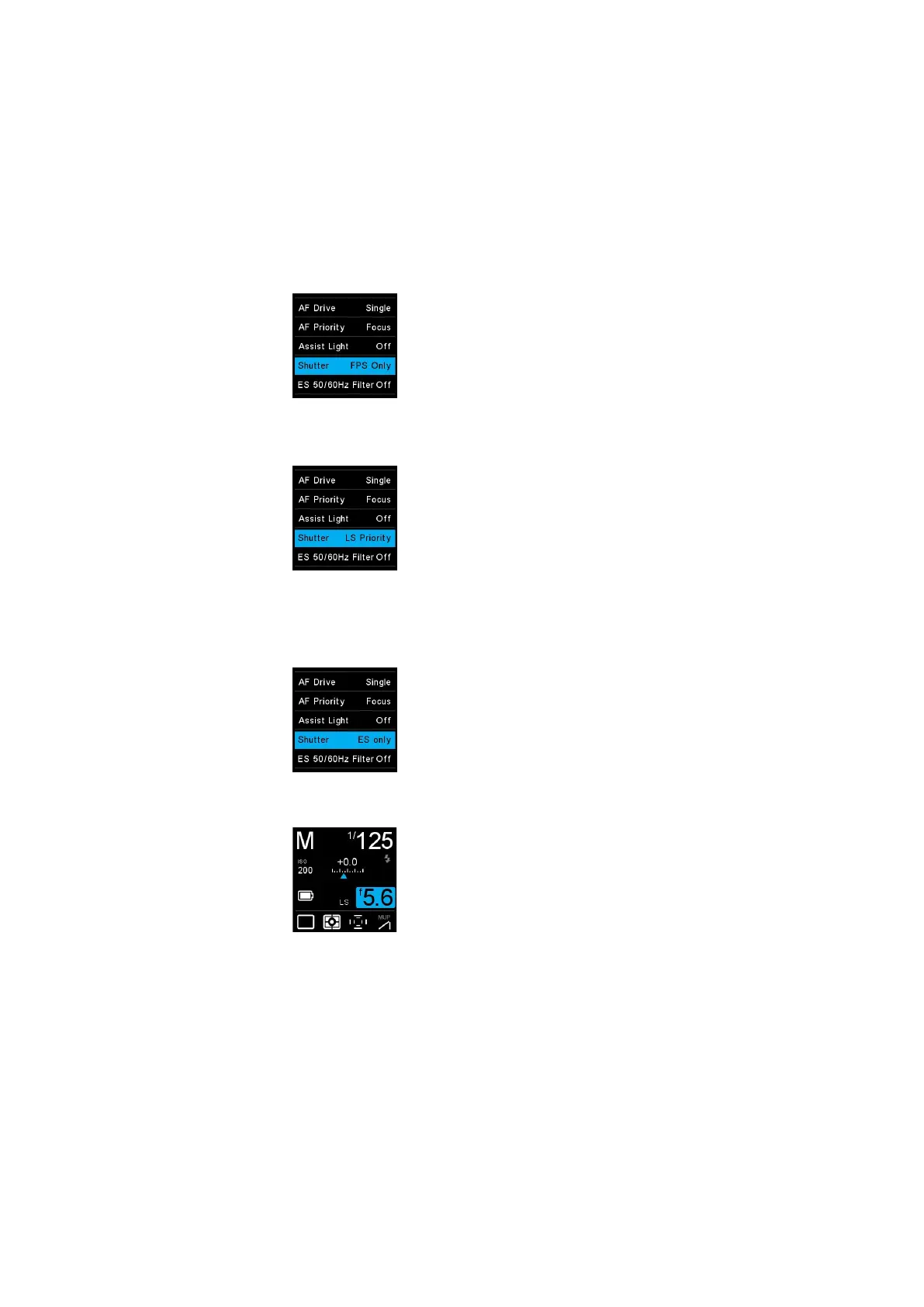Flash Readyness Icon
Electronic Shutter (ES Only)
Focal Plane Shutter (FPS Only)
Leaf Shutter (LS Priority)
There is a big dierence in the way that the Focal Plane Shutter, the Leaf
Shutter and the Electronic Shutter works when you shooting with a flash
system. Because of this, it is valuable to know how the dierent shutters work
to fully take advantage of the Flash Analysis Tool.
Focal Plane Shutter (FPS)
The focal plane shutter works by having two curtains moving vertically in front
of the sensor to control the exposure time. First, the front curtain opens so the
light can start to reach the sensor, and after the appropriate delay, the rear
curtain follows and closes the exposure. It takes several milliseconds for the
curtains to move from open to closed. This is important to know if you are
using a fast shutter speed, because then one or both curtains will cover a part
of the sensor, and the fired flash will only light up a row of all the pixels.
Because of this, the flash sync speed with the focal plane shutter cannot be
faster than 1/125 second. Note that the Flash Analysis Tool with show a
hatched pattern to indicate when the shutter is not fully open.
Leaf Shutter (LS)
The leaf shutter built into the Schneider Kreuznach Leaf Shutter lenses works
in a dierent way. Instead of curtains moving vertically, the shutter consists of
a series of blades, that opens and closes — not unlike a lens aperture – to
control the exposure. In eect, they form a hole that gradually becomes
smaller until it is fully closed. It works a lot faster than the focal plane shutter
and has the advantage that all pixels gradually get less and less light until the
exposure ends. Because of this, the flash sync speed with a leaf shutter can be
as fast as 1/1600 seconds. Note that when the XF Camera is using the leaf
shutter as the second curtain, it automatically uses an electronic first curtain.
The electronic first curtain works almost instant, so when you are inspecting
the Flash Analysis Tool, you will note that the shutter is almost fully open
during the entire exposure time.
Electronic Shutter (ES)
When you use the Electronic Shutter feature on the IQ3 100MP, both the first
and second curtains are fully electronically and controlled by the sensor. No
mechanical shutter is used. Since the sensor cannot open and close all the
pixels simultaneously, it instead uses a rolling shutter mechanism where it
reads lines of pixels slowly across the sensor. It can take more than a second
to read out the entire sensor, so the shutter time must be long in order for the
flash light to hit all pixels on the sensor. As a consequence, the electronic
shutter will only support flash sync of around 1.6 seconds, but note that it will
work perfectly when using continuous light for copy stand photography.
Synchronization readiness is indicated on the top screen with a small flash icon
located beneath the shutter speed setting. If a flash icon is not visible, the
shutter speed setting is outside range of the attached lens or manually
selected shutter.
Wired Flash
Wired manual flash is possible through the flash sync port on the XF Prism
Viewfinder or IQ Digital Back, with appropriate cable. Manual flash is also
possible through the hot shoe, located on top of the prism viewfinder. Slave
units and wireless transmitters can also be connected. Please refer to their
respective user manuals for more details.
Note Phase One A/S cannot accept responsibility for accidents or damage
occurring as a result of using third-party devices in conjunction with Phase
One equipment.
Shutter Mechanisms and
Flash Synchronization range
106Flash PhotographyXF IQ4 Camera System Manual |

